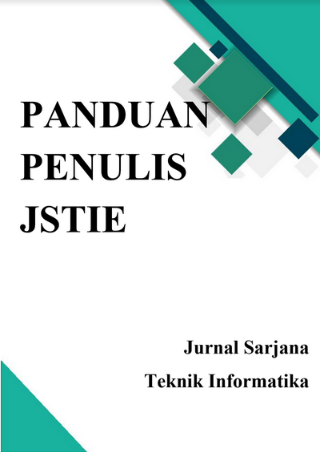IMPLEMENTASI WEB SERVICE BERBASIS WEB TERINTEGRASI SERVICE WISMA MM UGM AND CONVENTION
DOI:
https://doi.org/10.12928/jstie.v3i1.2930Abstract
Pesatnya perkembangan teknologi komputer di negara maju, membuat para peneliti semakin ingin mencoba tenaga komputasi yang baru. Organisasi atau lembaga banyak yang menggunakan layanan web service. Pengguna layanan web service diantaranya beberapa lembaga pendidikan, perkantoran dan masih banyak lagi yang lainnya. Integrasi sistem karena kendala seperti keterbatasan atau pemborosan akses data yang menyebabkan keterlambatan beberapa kegiatan pengkomputasian. Permasalahan tersebut menyebabkan akses data dari database server membutuhkan waktu yang cukup lama.
Tahapan penelitian terdiri dari perancangan sistem, perancangan jaringan, implementasi sistem dan pengujian sistem. Langkah pengembangan sistem yang meliputi perancangan jaringan dan perancanan sistem. Integrasi sistem dibangun dengan framework Code Igniter untuk memudahkan developer dalam pengembangan selanjutnya. Pengujian sistem menggunakan uji kelayakan pada keadaan sebelum dan sesudah diterapkannya layanan web service.
Berdasarkan hasil dari pengujian dengan metode uji kelayakan diperoleh hasil 67% responden menyatakan sangat setuju 8% menyatakan setuju dan 25% menyatakan tidak setuju bahwa implementasi web service yang diintegrasikan pada aplikasi pendataan di Wisma MM UGM and Convention. Berdasarkan hasil pengujian dapat diambil kesimpulan bahwa aplikasi yang dikembangkan mampu menghubungkan dua database sehingga proses pembuatan laporan per periode lebih cepat dan efisien.
Kata Kunci : Integrasi, Sistem, Web, Service dan MaintenanceReferences
Rizal, Fahmi. 2012. “Implementasi Web Service pada Database Terdistribusiâ€. Yogyakarta: Skripsi Informatika UAD.
Dianawati, Ery. 2013. “Implementasi Distributed Computing untuk Pengembangan Web Storeâ€. Yogyakarta: Skripsi Informatika UAD.
Asri, Fajril. 2010. “Implementasi Security pada Web Service nusoap dengan Menggunakan Algoritma RIJNDAEL/AESâ€. Yogyakarta: Skripsi Informatika UAD.
Siswo. 2004. â€Pengenalan Web Serviceâ€. Yogyakarta: Penerbit Erlangga.
Firmansyah, Ikhsan Wahyudi. 2010. “Pengenalan Pemodelan Sistemâ€. Jawa timur: Universitas Muhammadyah Malang.
Mardiyanto, Dwi Aji.2004. “Pemodelan Data dalam Rekayasa Perangkat Lunakâ€. Yogyakarta : Penerbit Gava Media.
Heru.2012. “Pengenalan Code Igniterâ€. Yogyakarta : Penerbit Erlangga.
Downloads
Published
Issue
Section
License
License and Copyright Agreement
In submitting the manuscript to the journal, the authors certify that:
- They are authorized by their co-authors to enter into these arrangements.
- The work described has not been formally published before, except in the form of an abstract or as part of a published lecture, review, thesis, or overlay journal. Please also carefully read Journal Posting Your Article Policy.
- The work is not under consideration for publication elsewhere.
- The work has been approved by all the author(s) and by the responsible authorities – tacitly or explicitly – of the institutes where the work has been carried out.
- They secure the right to reproduce any material that has already been published or copyrighted elsewhere.
- They agree to the following license and copyright agreement.
Copyright
Authors who publish with Jurnal Sarjana Teknik Informatika agree to the following terms:
- Authors retain copyright and grant the journal right of first publication with the work simultaneously licensed under a Creative Commons Attribution License (CC BY-SA 4.0) that allows others to share the work with an acknowledgement of the work's authorship and initial publication in this journal.
- Authors are able to enter into separate, additional contractual arrangements for the non-exclusive distribution of the journal's published version of the work (e.g., post it to an institutional repository or publish it in a book), with an acknowledgement of its initial publication in this journal.
- Authors are permitted and encouraged to post their work online (e.g., in institutional repositories or on their website) prior to and during the submission process, as it can lead to productive exchanges, as well as earlier and greater citation of published work.







